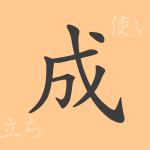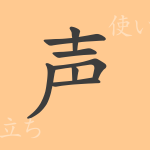Kanji, deeply ingrained in Japanese culture, carries rich history and meaning in each character. ‘西’ (にし) is no exception. This article explores the etymology, modern usage, and the various phrases and idioms related to ‘西’, deepening our understanding of this common kanji in Japanese culture.
Origins of 西
The kanji ‘西’ is believed to have originated in ancient China, depicting birds returning to their nests at dusk. It represents the direction where the sun sets, thereby becoming the symbol for “west”. Over time, ‘西’ has become established as a directional word.
Meaning and Usage of 西
In modern Japanese, ‘西’ primarily denotes one of the four cardinal directions. Beyond representing a direction, it also has geographical and cultural connotations, such as in ‘西洋’ (the West). Additionally, it appears in expressions like ‘西日’ (setting sun), which allude to the passage of time.
Readings, Stroke Count, and Radical of 西
The kanji ‘西’ has several readings in Japanese:
- Readings: On’yomi ‘セイ’, ‘サイ’; Kun’yomi ‘にし’
- Stroke Count: ‘西’ consists of 6 strokes.
- Radical: The radical for ‘西’ is sometimes referred to as ‘にしかんむり’.
Phrases and Proverbs Involving 西
Many idioms, phrases, and proverbs involve ‘西’, reflecting the richness of the Japanese language. For example, ‘西洋’ refers to Western countries, ‘西日’ describes the evening sunlight, and ‘西方浄土’ in Buddhism denotes the pure land of perfect bliss.
Conclusion on 西
Understanding the meanings and histories behind kanji like ‘西’ enriches our comprehension of Japanese. ‘西’ not only indicates direction but also symbolizes culture and nature. By gaining a new perspective on everyday use of ‘西’, we can glimpse the rich world behind the language.

























